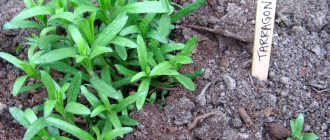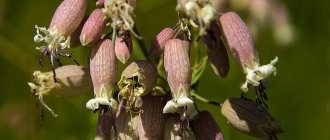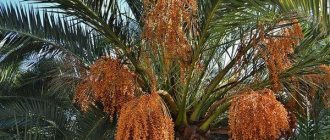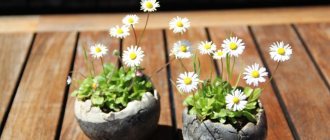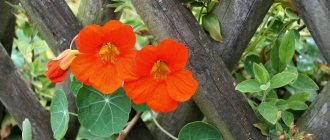Author: Elena N. https://floristics.info/ru/index.php?option=com_contact&view=contact&id=19 Category: Garden plants Published: January 30, 2017Last edits: January 06, 2021
- How to stratify cedar seeds
In nature, seeds that have fallen from plants overwinter in the soil, and by spring their hard shell becomes softer and cracks under the influence of frost and moisture. Low temperatures and high humidity provoke the growth of the embryo, and it breaks through the shell in search of food and light. In gardening, there is an agrotechnical technique that imitates the necessary weather conditions and thereby accelerates seed germination. This technique is called stratification.
What does seed stratification mean?
Why is stratification needed in culture, and what is stratification at home?
Stratification (Latin stratum - flooring, facere - to do) is a process that artificially creates winter conditions (cold and moisture), as a result of which seed germination accelerates and their germination rate increases. As a rule, stratification involves exposing seeds to low temperatures: the seed of some plants must go through embryonic dormancy, otherwise it will not sprout.
In the Middle Ages, seeds were placed between two layers of moist soil and left in the open air to stimulate rapid germination. Now it is enough to place the seeds with damp sand, vermiculite or a cloth napkin in a zipper bag and keep them in the refrigerator. The substrate should be three times more than the seed, and its humidity should be moderate - too much moisture can lead to too rapid germination of seeds or the appearance of mold on them.
Digging in the garden plot
Take plastic containers and make holes in the roofs and bottoms (you don’t have to do this if you know for sure that winter thaws don’t happen in your region). Sow the seeds in a fertile substrate and dig the containers into the area, sprinkled with garden soil, sawdust and a thick layer of snow on top. In the event of a thaw, moisture will be able to seep through the upper holes and drain through the lower ones, preventing the seeds and soil from souring. In the spring, when you remove the containers from under the snow, you may even see tiny green shoots.
Timing of seed stratification
For seeds of many trees, shrubs and herbaceous perennials, artificial or natural stratification of seeds is mandatory, especially in northern regions. The temperature for seed stratification should be from 1 to 3 ºC, and the period of such exposure for each plant, its type and variety is different - from several weeks to six months. For example:
- Norway maple: planting and care, description of varieties
Stratification period in days:
- for apricot from 80 to 150;
- for quince from 70 to 90;
- for cherry plum from 120 to 150;
- for barberry and honeysuckle from 75 to 90;
- for hawthorn and viburnum from 210 to 240;
- for cherries and chokeberries from 150 to 180;
- for walnuts from 50 to 80;
- for pears from 70 to 100;
- for strawberries from 20 to 30;
- for cotoneaster and rosehip from 75 to 90;
- for lemongrass from 90 to 120;
- for grapes from 120 to 140;
- for almonds from 50 to 140;
- for peach from 100 to 120;
- for plums, rowan and thorns from 120 to 180;
- for bird cherry, lilac, aconite, hosta and anemones from 30 to 50.
Stratification of flower seeds, such as clematis, bulbous, peonies, lavender, violets, phlox, irises and other perennials, lasts 2-4 months, and if you are planning spring planting of flower plants such as delphinium, Chinese rose, lobelia, primrose or aquilegia, then their seeds must be exposed to cold and moisture for 3-4 weeks before planting.
Carrots, celery, onions, parsley and other biennial vegetable crops require two to three weeks of seed stratification.
When sowing under winter, the seeds undergo natural stratification in winter.
Seed stratification at home
Seed stratification at home is carried out in several ways - cold, thermal, combined and stepwise. What type of stratification corresponds to a particular crop and how to stratify seeds in an apartment?
For perennials of temperate climates (stone fruits, pomaceous plants, some vegetable and flower crops) that end their growing season in the fall, the cold stratification method is usually used. The seeds are kept at temperatures from 0 to 4 ºC at 65-75 percent air humidity. The duration of the procedure is from one to six months. If the seeds are not stratified, they may not germinate when sown in spring. For crops such as sea buckthorn, honeysuckle and strawberries, seed stratification is not necessary, but desirable, since without it seedlings will be rare.
Mainly vegetable crops – tomatoes, peppers, cucumbers and eggplants – undergo thermal stratification. To awaken life processes in them, it is enough to soak their seeds in water at a temperature of 18-22 ºC. After being in a humid, warm environment for one to two days, the seeds of these crops begin to sprout, that is, they peck.
There are crops whose seeds are difficult to germinate due to the shell being too dense. For such seeds, a combined stratification is used, simulating weather conditions during changing seasons. Plants with slow-germinating seeds include, for example, perennials such as viburnum, snowberry, yew, hawthorn, plum and apricot.
In order to soften the dense peel and awaken the embryos, the seeds are first kept for four months at a temperature of 20-25 ºC, and then stored for six months in a cellar or in a refrigerator at a temperature of 0 to 5 ºC. As you can see, the process of combined stratification takes a lot of time, although for plants such as yew and maple, or rather, some types of maple, the thermal period fits in only 1-1.5 months.
The most complex method of pre-sowing seed treatment is step stratification. It consists of several cycles of seed treatment at alternately low and high temperatures. This is how the seeds of actinidia and some types of peonies are processed. And before sowing, the seeds of aconite, aquilegia and primrose are kept in water at a temperature of 18 ºC for a week, placing them in the freezer every night until the morning.
To stratify seeds at home, both dry and wet stratification are used. Dry stratification is performed in the following order:
- seeds kept for half an hour in a half-percent solution of potassium permanganate are washed several times with clean water, dried, poured into a plastic bag and placed in the refrigerator, where they will be stored at a temperature of 0 to 3-4 ºC until sowing. You can place the disinfected, washed and dried seeds in a plastic container, seal it tightly with a lid and bury it in the snow in the yard, and when it gets warm, transfer it to the refrigerator before sowing;
- An excellent way is cold stratification of seeds in the stalks of late cabbage varieties. Remove the middle from the stump, fill the formed cavity with seeds, close the entrance with the rest of the stump and secure it with tape. Bury the stalks with seeds in the ground in a vertical position to the depth of a spade bayonet and leave a mark above them. In the spring, when the ground warms up enough to sow the crop stored in the stalk, remove your treasure from the ground and sow the seeds.
Wet stratification is performed in two ways:
- sanding: thoroughly washed from organic residues, disinfected and dried seeds are placed in containers, 2/3 filled with a damp substrate (sand, sawdust, moss or peat), treated with a biofungicide solution (Trichodermin, Fitosporin or Alirina-B). The seeds are covered with a layer of the same substrate on top. The containers are closed with a lid, placed in a plastic bag and stored in the vegetable drawer of the refrigerator at a temperature of 0 to 3-4 ºC. You should periodically check the condition of stored seeds, moistening the substrate if necessary. The last couple of weeks before sowing, the storage temperature should be 1 ºC;
- strips of fabric are cut 30-35 cm long and 10-12 cm wide, a thin layer of cotton wool or moss is laid out along their middle, on which the seeds are carefully laid. The edges of the tape are folded along the length so that they cover the seeds, after which the tape is rolled into a roll, tied so that the roll does not unroll, and the roll is lowered into water. The rolls are then wrung out, placed in a plastic bag and stored on the bottom shelf of the refrigerator, checking from time to time to see if the seeds require additional moisture and inspecting the seeds for mold. If you find mold, wash, disinfect, dry the seeds and pack them again.
Useful tips
- Don't rush to start stratification ahead of time. Consider the optimal age of seedlings before planting in open ground.
- Place a waterproof tag with the name of the plant and the date of sowing the seeds in each container/tray/clip bag - this way you can plant the plants in the area according to your plan.
It remains only to remind you that planting seeds is one of the most important stages in growing plants. And every gardener must understand that this period must be approached with maximum responsibility - after all, the further growth, fertility and quality of the plant depends on how correctly the seeds are planted.
Stratification of seeds of different crops
How to stratify cedar seeds
Pine nuts, which are in a very hard shell, do not germinate well without stratification. To facilitate germination of seeds, pine nuts are placed for stratification in basements, glaciers, refrigerators, in snow, and buried in frost-free trenches or holes.
- Luffa at home: care and types
Before stratification, pine nuts are disinfected for 2-3 days in a half-percent solution of potassium permanganate - during processing, empty seeds float, and after disinfection, full-grain nuts are removed, mixed with raw sawdust or wet sand in a ratio of 1:2, placed in a plastic bag, glass jar or a plastic box, close tightly and store at a temperature of about 0 ºC with an air humidity of 90-100%. Stratification of cedar seeds lasts 3-4 months, but sometimes it may take six months.
How to stratify seeds of pome crops
Stratification of apple tree seeds at home is carried out in two ways - with and without substrate. To stratify seeds in the substrate, you need to fill a wooden box 15-20 cm high with well-washed river sand, then mix the apple tree seeds, previously disinfected using the method we have described, with sand in a ratio of 3 (sand) to 1 (seeds) and place them for storage in a basement or cellar at temperature 3-4 ºC. Keep the sand slightly damp throughout the stratification, which can last about 90 days.
Stratification of seeds without a substrate involves immersing seeds placed in a linen bag for 2-3 days for swelling in water, which is changed daily. On the fourth day, dip the bag of seeds for half an hour in a half-percent solution of potassium permanganate, then squeeze, rinse in clean water, squeeze out excess moisture again and hang the bag of seeds to dry. When water stops dripping from the bag, remove the seeds from it, place them in plastic bags and store them under the conditions described above, stirring them once a week and moistening them as needed.
In the same way, stratification of seeds of quince, pear and other pome fruit trees is carried out.
How to stratify strawberry and wild strawberry seeds
For strawberries and wild strawberries, quick stratification of seeds is used: when sowing, a layer of snow 2 cm thick is laid on top of the soil, and small seeds of strawberries or wild strawberries are laid out on the snow with a wet toothpick, without covering them or covering them with anything. The container with the crops is placed on the bottom shelf of the refrigerator for 2-3 days - during this time the snow will melt and draw the seeds into the soil as much as needed. After three days, the crops are placed on a light windowsill and covered with glass or transparent film.
There is another method of pre-sowing preparation - warm stratification of strawberry seeds. The seeds are laid out on a damp paper napkin, covered with another one on top, then this “sandwich” is rolled up, placed in a plastic bag, tied or closed, leaving a little air in the bag, and kept for a day in a warm place.
How to stratify coniferous seeds
Stratification of pine (cedar) seeds is carried out in peat - it is pre-soaked in water, then squeezed well and placed in a layer in a small plastic container. Disinfected seeds are placed on peat, covered with another layer of peat, the container is closed with a lid and placed in the refrigerator until sowing.
Stratification of spruce seeds is carried out in the same way, and stratification of thuja seeds is a simplified process: a week before sowing, the seed material is kept for two days in cool running water (it is most convenient to place them in a gauze bag and lower them into the toilet tank), and then placed wet on 2-3 days in the refrigerator, after which they are ready to sow.
How to stratify clematis seeds
Large clematis seeds are best sown before winter immediately after collection, but keep in mind that the seeds of some species take a very long time to germinate - about 500 days. Therefore, it is better to stratify them and sow them in the spring. The seeds are mixed with a moist substrate consisting of peat and sand in equal parts, and kept for three months at a temperature of about 5 ºC - in the refrigerator or in snow in the yard. Be aware that large seeds may become prey for rodents.
Stratification of medium-sized clematis seeds is carried out within one month: first, they are soaked for 1-2 days in water, which is changed at least once every three hours, after which the seed is subjected to bubbling - immersed for a week in water saturated with air using aquarium compressor.
Small seeds should simply be soaked in water for 24 hours before sowing.
How to stratify grape seeds
Stratification of grape seeds begins 35-40 days before sowing: after disinfection, they are mixed with an equal volume of well-washed sand, placed in a layer no thicker than 6-7 cm in a container and placed for stratification at a temperature of 3-5 ºC for 20-25 days . After this, the container is transferred indoors and the seeds are germinated for 5-6 days at a temperature of 25 ºC, preventing the seeds and substrate from drying out. Those seeds that crack are sown immediately.
How to stratify lavender seeds
Small lavender seeds are laid out on a cotton pad moistened with boiled water and covered with another moistened pad, after which they are placed in a zipper bag, wiped from the inside with hydrogen peroxide, and placed in the vegetable drawer of the refrigerator, where the temperature is approximately 5 ºC. Stratification of lavender seeds lasts two months.
How to stratify honeysuckle seeds
Honeysuckle seeds do not require mandatory stratification, but it is still advisable to carry out pre-sowing treatment. Stratification of honeysuckle seeds is carried out within 1-2 months using the sanding method, which we described at the beginning of the article.
- How to sow Chinese cabbage for seedlings in summer
How to stratify walnut seeds
Some gardeners insist that nut seeds should not be stratified before spring sowing, but simply soaked. Stratification of nut seeds is carried out within one to three months, and seedlings after treatment appear after 2-3 weeks, and seeds soaked for 2-3 days germinate no earlier than after more than three months. But you can experiment with both options.
Walnut seeds are stratified in wet sand: walnut seeds with thick shells are kept at a temperature of 5-7 ºC from mid-January for three months. The stratification period for thin-skinned nuts is 1-1.5 months, otherwise they begin to rot, and they need to be kept in the sand at a temperature of 15-18 ºC, which is why they are placed for stratification later.
How to stratify persimmon seeds
After disinfection, persimmon seeds are placed between two layers of damp sand or peat, placed in a plastic bag and kept at 5 ºC. Stratification of persimmon seeds lasts from 2 to 3 months.
How to stratify linden and maple seeds
Before sowing, linden seeds are kept for a week in water at room temperature, changing it every other day. Then the seeds are placed in a container with wet sawdust or sand (1 part seeds to 3 parts substrate), a little peat is added to improve air circulation, covered with a lid with holes and placed at a temperature of 1 to 5 ºC. Stratification of linden seeds lasts two to three months, but if the seeds do not sprout two weeks before sowing, move them to a room with an air temperature of 25-30 ºC, moisten and stir daily until they begin to sprout.
Stratification of maple seeds can last up to 4 months. Place 20-30 disinfected maple seeds in a small plastic ziplock bag, add a handful of vermiculite moistened with a fungicide solution, remove most of the air from the bag, then zip the bag and place it at a temperature of 1 to 5 ºC. Check the condition of the seeds weekly, removing condensation or, conversely, slightly moistening the drying substrate. If some seeds appear moldy, remove them and adjust the humidity in the bag. Once the seeds sprout, they are ready for sowing.
How to stratify delphinium seeds
Stratification of delphinium seeds is carried out using a wet method in strips of fabric. The method was described in detail at the beginning of the article. Rolls of fabric with seeds inside should be covered with damp moss, placed in a container and placed at a temperature of 5-6 ºC for a week. At the end of the period, the rolls are unrolled to check the condition of the seeds - they should swell by this time.
However, if you find small white sprouts on some of the seeds, you will need to sow them immediately and place the rest in cooler conditions. The fact is that such sprouts almost always break off when sown, and you will wait in vain for these seeds to sprout.
How to stratify aquilegia seeds
Stratification of aquilegia seeds is carried out in two ways - cold and heat. During cold stratification, seeds disinfected in a half percent solution of potassium permanganate are placed in a container with a moist substrate and then placed in a refrigerator for a month at a temperature of 5-7 ºC. With thermal stratification, the seeds are kept moist for a month at a temperature of 35 ºC.
How to stratify rose seeds
Disinfect rose seeds that have just been extracted from the fruit by washing them for 20 minutes using a sieve in hydrogen peroxide. Then the seeds are placed on a substrate moistened with a solution of hydrogen peroxide that can retain moisture - cotton pads, cloth napkins or paper towels. Cover the seeds on top with the same substrate, roll the tape, place it in a bag or container and store it in the vegetable section of the refrigerator at a temperature of 5-7 ºC. Stratification of rose seeds lasts about two months, during which it is necessary to periodically ventilate the seeds and, as necessary, moisten the material in which they are wrapped.
If you understand the general rules of seed stratification, then you will not have to seek advice on this issue every time. And if you back up your knowledge with experience, you will be able to give advice on stratification to less experienced gardeners.
Processing options
In the methods described above, two processing options are used - wet and dry. Each of them has its own varieties and rules of application.
Dry
Dry seed can be stratified in two ways. The first involves performing the procedure in this order:
- the seeds are kept for 30 minutes in a 0.5% solution of potassium permanganate;
- washed under running water, dried;
- pour into a plastic bag;
- Place in the refrigerator for at least 1 month (until sowing).
Related article:
We simplify harvesting in the garden: 6 types of devices for collecting fruits from trees
The second option is more original. It is carried out in the fall according to the following scheme:
- remove the core from the head of late cabbage;
- seed is poured inside, filling the cavity not to the brim;
- cut off the bottom of the removed stalk, close the hole and secure it with tape;
- bury the cabbage head in the ground on a bayonet, positioning it vertically, and set a mark.
Dig up cabbage immediately before sowing. They take out the planting material and immediately sow it.

